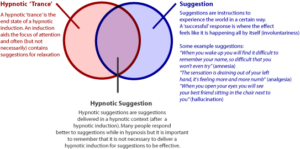Kopelson, Karen. “Dis/Integrating the Gay/Queer Binary: ‘Reconstructed Identity Politics’ for a Performative Pedagogy.” College English, vol. 65, no. 1, pp.17-35, http://www.jstor.org/stable/3250728. Accessed 12 Oct. 2016.

Examples of Identity Spectrums that many Identity-Based Pedagogical Approaches Promote
Kopelson, building upon Butler’s theory of performativity, argues for a deconstruction of identity-based politics. Much as Butler has stated, Kopelson reiterates that the coming-out narrative further perpetuates the binary construct of heterosexuality as the norm and homosexuality as the other. Identity-based pedagogical approaches, no matter how well-intentioned, run the risk of doing the same: creating a binary structure and encouraging that mindset within students. The both/and negotiated approaches of many English Studies Departments and composition classrooms can either centralize homophobic attitudes, perpetuate an atmosphere of fear, or reduce “‘the problem of remedying homophobia’” (20). Queer theory in general confuses, destabilizes, and challenges existing concepts of gender and sexuality. In fact, Kopelson goes so far as to claim the term queer as a verb because of the above mentioned synonymous actions that accompany a truly queer approach that results in a denormalizing of identity categories.
Ultimately, “any aspect of identity, or any intersection of aspects of identity, can be ‘queered’” (25). Kopelson gives an example of an instructor who queers the concept of whiteness and another who queers the identity of being a Jew. However, there is always a risk in association. Another example the author brings up is that of a Catholic, black lesbian. She is most commonly associated with black females and her sexuality and religion identity constructs become invisible because of this association. Perhaps the biggest issue Kopelson raises in conjunction with identity-based politics is the false presence of unity. As outliers, all marginalized people come to be viewed in unison. Ultimately, this eliminates the possibilities for difference.
Queer pedagogy that is performative-focused allows for “multiplicity… [which is] one of the greatest advantages of queer or performative pedagogies over pedagogies of disclosure/coming out” (25). While many who oppose queer pedagogical approaches fear that these will ironically replicate the invisibility of students who are already struggling for recognition, Kopelson sees this dynamic shift to embrace queer “politics where identity is a persistent and provocative question, but never a certainty” as a viable option to avoid both/and approaches or replicas of binary constructs (32). While she admits the possibility for failure, she ends with a admonition to embrace a pedagogy of no sides where there is a chance for success.
I found Kopelson’s multidisciplinary argument fascinating, especially following the identity theories of Burke and Freud who both argue for some ratio of essential identity, whether it’s social or sexual. Kopelson, utilizing Butler’s theories, seems to be on the other end of the spectrum: no intrinsic identity or self. This provides quite the array to consider when seeking my own epistemological alignment. Because my learning outcomes are often connected, at least partially, to my own identity as an educator, the pedagogical basis of Kopelson’s argument was interesting. I was left questioning the ethical implications of a queer pedagogical approach that has “the express intention of disrupting students’ identity-based expectations” or that attempts to keep “them [students] ‘off balance’ by deliberately shifting among and between positions of provocative skepticism and fervent belief” (20, 25). As one instructor within Kopelson’s example stated, some students need an essentialist identity for a time of transition into a more unstable mindset. This call for dynamic pedagogy gives me reason to pause and consider all my students. Are teenagers cognitively and emotionally able to deal with this level of instability? Perhaps explicitly queer pedagogical approaches should be reserved for the collegiate classroom.
